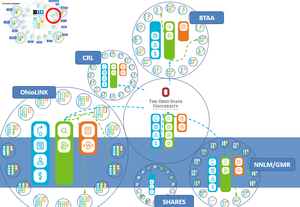Rupert Murdoch’s short article in the current Forbes is being noted around the place. It is a quick read and worth a visit.
Those of us in so-called old media have also learned the hard way what this new meaning of networking spells for our businesses. Media companies don’t control the conversation anymore, at least not to the extent that we once did. The big hits of the past were often, if not exactly flukes, then at least the beneficiaries of limited options. Of course a film is going to be a success if it’s the only movie available on a Saturday night. Similarly, when three networks divided up a nation of 200 million, life was a lot easier for television executives. And not so very long ago most of the daily newspapers that survived the age of consolidation could count themselves blessed with monopolies in their home cities. [Mixed Media – Forbes.com]
The piece is succinct, and, maybe, in itself unremarkable. What is remarkable is that it is presented over Rupert Murdoch’s name.
The good news is that we are learning–and fast. Take the type of media I know best–news. News is in more demand than ever, but the vast network of Internet-savvy news junkies want their news with several fresh twists: constantly updated, relevant to their daily lives, complete with commentary and analysis, and presented in a way that allows them to interact not just with the news but with each other about the news. They won’t wait until six o’clock to watch the news on television or until the next morning to read it in isolation. This plainly provides a challenge for news providers but also an opportunity to be far more engaged with the audience. [Mixed Media – Forbes.com]
Of course, News Corp owns MySpace. And we read that MySpace in discussions to buy PhotoBucket which has 40% of the US online photo market according to Reuters. This is especially interesting and seems to be about aggregating attention by channeling more of the user flow. PhotoBucket is a major downstream destination for MySpace users, and this traffic generated a large amount of PhotoBucket activity.
Nearly 60 percent of Photobucket site traffic comes from users leaving MySpace properties, Hitwise click data shows. Photobucket is the third most popular destination for MySpace users after Google and Yahoo, according to Hitwise statistics. [MySpace to acquire Photobucket: source | Technology | Reuters]
It underlines how Web 2.0 (or the activities which get labelled Web 2.0) is as much about consolidation as it is about diffusion.
Related entries:



